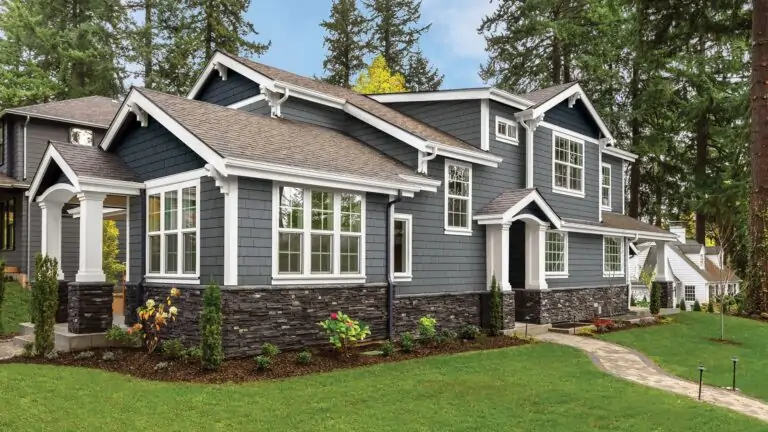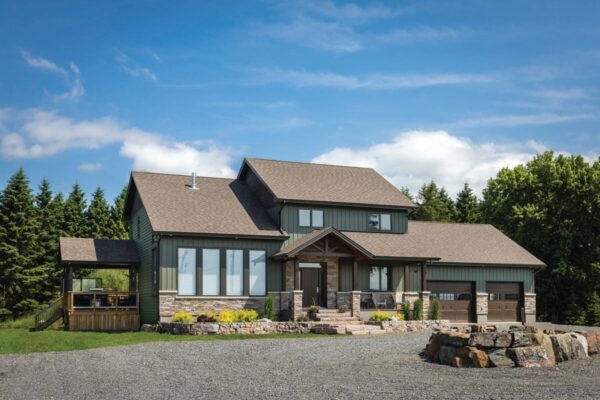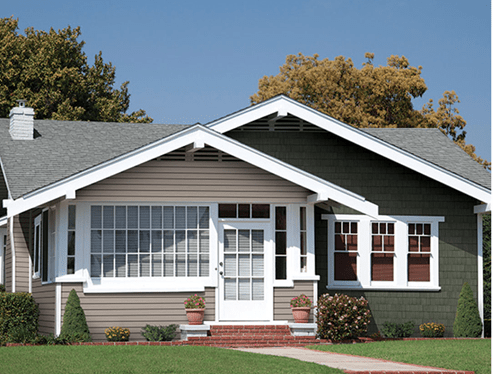Most people don’t consider vinyl an eco-friendly building product, but data shows it actually is. There are misconceptions that vinyl siding doesn’t have sustainable design, production or operations. But vinyl outperforms almost all other common cladding materials, including fiber cement and brick, in total environmental impact.
While the classic look of wood is forever timeless, new developments in design allow vinyl siding to look and feel like real wood, down to the actual grain. With vinyl, you can eliminate the cost and maintenance of wood and choose a sustainable, durable and affordable alternative. If you, your company or your customers are dedicated to greener construction and building practices, then vinyl siding is for you.
Less Waste
From production to construction, vinyl siding produces less waste than other building materials, such as brick and cement. Vinyl siding products require minimal raw material and produce virtually no waste. It also requires less water and energy to produce than other building materials.
Lower Impact
Vinyl siding also maintains a low environmental impact over its lifespan. The National Institute of Standards and Technology (NIST) developed Building for Environmental and Economic Sustainability (BEES) software to measure specific environmental concerns such as air pollution, acidification and global warming potential in the environmental life cycle of products.
Throughout its life cycle, vinyl releases significantly fewer toxic chemicals into the environment than other siding materials and has a lower overall environmental impact.
Compared to vinyl siding, construction materials like fiber cement contribute 4x to global warming potential, 2x times to acidification and over 3x to air pollution. Compared to other common sidings, vinyl performs amazingly well. According to the NIST, vinyl has a lower environmental impact than brick, and even rivals some wood siding.
Westlake Royal Building Products™ uses PVC resin as the backbone of Royal® vinyl and Exterior Portfolio® vinyl siding. This is derived from components in nature, such as common salt and natural gas, that make PVC weather-resistant, chemically stable and lightweight.
Recyclable
While some argue that wood is a more eco-friendly siding option because it is biodegradable, vinyl siding lasts longer and is recyclable. Vinyl siding is recycled with post-consumer recycling, post-industrial recycling and closed-loop recycling, meaning every part of its production and lifespan lends it to being easily reused.
Recycling reduces waste disposal and extraction of new materials while reducing landfill accumulation and incineration. Both lead to an increase in greenhouse gas emissions. Because of the nature of PVC, vinyl is a thermoplastic that can be ground up repeatedly, re-melted and formed into various new products even after the life expiration of the original product.
According to the Vinyl Siding Institute, 99% of all manufactured siding is recycled into other products rather than being sent to the landfill.
Longevity
The longevity of vinyl siding is part of what makes it so eco-friendly. Although recycling is an important component of sustainability, vinyl lasts such a long time it is unlikely to end up in the waste stream anytime soon. Many warranties on vinyl siding last for 40 years or more, meaning it doesn’t have to be ripped out and replaced very often.
Not only is vinyl long-lasting, but it’s low maintenance. Exterior siding that requires less care saves resources and reduces emissions and chemicals. The lifetime of vinyl far outweighs less sustainable options, such as wood.
Thanks to innovative technology and sustainable practices, PVC vinyl siding is perfect for giving homeowners the aesthetic and performance they are looking for, while offering the peace of mind that our products were purpose-built to support a sustainable alternative and future.





